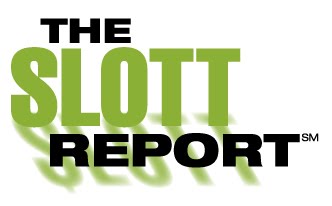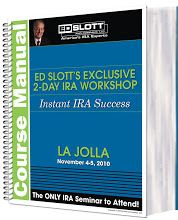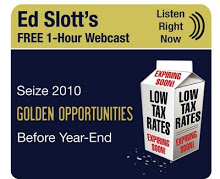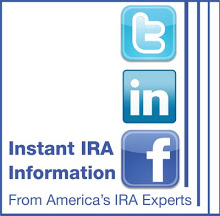This week, the Ed Slott and Company IRA Discussion Forum featured a question on how tax withholdings from an IRA distribution are be treated. Sounds simple enough, but withholding can actually be a pretty tricky topic when it comes to retirement plans. Want to know why? Read on to find out.
Distributions from an employer plan can have different withholding requirements depending on how the distribution is made and what is being distributed. Fortunately, if you make a trustee-to-trustee (direct rollover) distribution from a plan to another qualifying plan (including an IRA) - which is generally the best way to move money - the distribution will not be subject to any withholding.
On the other hand, if you take a distribution from an employer plan and have it payable to yourself (i.e. a check made out to you), the plan is generally required to withhold 20% of your distribution (you can voluntarily withhold more). This can cause problems if you are planning to roll those funds to an IRA (or another plan) via a 60-day rollover. In order to roll over the full amount, you’ll have to come up enough money out-of-pocket to replace the 20% that was withheld.
For example, say you had $100,000 in a 401(k) and took a full distribution of your account - payable to yourself - with the intention of rolling over your total plan balance to an IRA. Upon the distribution, the plan would give you an $80,000 check and would withhold the remaining $20,000 (20%). If you put the full check into the IRA, you’d still only have only $80,000 in the account. In order to make a “complete” rollover, you’d have to replace the $20,000 withheld by the plan with your own funds within 60 days. If not, the $20,000 would be taxable and, if applicable, the 10% early distribution penalty would apply as well.
Of course, like most things in the world of retirement plans, there are exceptions to the general rule. Distributions of certain “types” of plan funds are not subject to the 20% withholding rule. These exceptions to the norm include distributions of after-tax dollars and distributions of only employer securities.
What about IRAs? Well, good news here actually. One of the benefits of having your retirement funds in an IRA is that there are generally no withholding requirements. Although there is a standard 10% withholding, unlike the 20% withholding from a plan, you can simply opt out of it and elect to receive the entire distribution. Alternatively, you can elect to have a larger portion of the distribution withheld. In fact, if you wanted to, you could withhold the entire distribution.
Keep in mind that any funds that do not get rolled over are treated as a distribution to you - even if the money withheld goes directly to the government! You will owe taxes on those funds and the 10% penalty if you are under the age of 59 ½ at the time of the distribution.
It’s pretty clear to see that the withholding rules for various types of retirement accounts can be a little more complicated than you might think at first glance. If you are planning on taking a distribution from a retirement account and want to know what withholding rules will apply, you may want to speak with a qualified advisor who specializes in distribution planning.
Got more questions?? Want to see what other people are asking? Check out the Ed Slott and Company IRA Discussion Forum.
By IRA Technical Consultant Jeffrey Levine and Jared Trexler
------------------------------------------------------------------------------
Comment, Question, Discussion Topic on your mind? Click on the Blue Comment Link below and leave your thoughts then check back to see what other consumers and advisors think.
*Copyright 2010 Ed Slott and Company, LLC
Friday, July 30, 2010
All About Withholding
Quality content
- Siti Non Aams
- Nuovi Siti Casino
- Casino Non Aams Italia
- Casinos Not On Gamstop
- Casino Sites Not On Gamstop
- Online Casino
- UK Casino Not On Gamstop
- Sites Not On Gamstop
- Casino En Ligne
- Casino En Ligne Fiable
- Casinos Not On Gamstop
- UK Casino Not On Gamstop
- Casino Sites Not On Gamstop
- Non Gamstop Casinos UK
- Casino Online Non Aams
- Casino Not On Gamstop
- Meilleur Casino En Ligne France
- Casino Sites Not On Gamstop
- Non Gamstop Casino Sites UK
- Casino Sites UK Not On Gamstop
- UK Casino Not On Gamstop
- Meilleur Casino En Ligne Fiable
- Casino Non Aams
Subscribe to:
Post Comments (Atom)
















0 comments:
Post a Comment